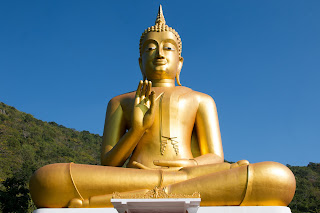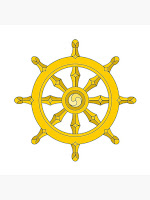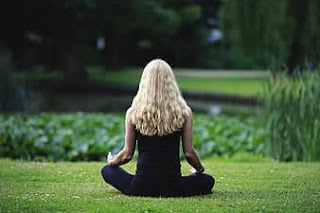How do you know that mindfulness is working for you? Are there signs that come right out and say ‘now that my friend was mindfulness’?
I doubt there is such an obvious signal such as this.
So how may we tell that our practice is working for us?
There are several ways in which I think illustrate the
effectives of your practice. The first is how you deal with a crisis.
The Buddha once asked an attendant of his to fetch him some cool water to drink. The dutiful attendant found a creek nearby to fill his vessel.
However, at the same time an oxcart drove through this creek and muddied the water making it undrinkable. The attendant waited for the mud to settle before filling the drinking vessel.The attendant related to the Buddha as to why it took him
such a loving time to return, and the Buddha replied ‘A disturbed mind is the
same as muddy water. With time the mud will settle, and we get clear water. And
to get the clear water you didn’t have to do anything and only needed patience’.
In times of stress many people panic. Panic leads to frantic
action, disorganized and counterproductive thoughts, stress and anxiety about potential
or uncertain outcomes, and often to an even more undesirable outcome. Mindfulness
and meditation allow one to foster and develop a sense of balance and calmness
allowing one to act with care and attention. It is only when our mind is settled,
we have clarity of thought.
At this time, I invite you to reflect upon a past time of
crisis or high stress and reflect upon how you handled it. Was it with calmness
or was it with agitation?
But what about something that is more of an everyday occurrence,
like a relationship?
Often when we’re younger we seek someone that offers us something
we ‘think’ we’re needing or lacking. It could be someone with an exciting hair
style, a certain personality, or they could be the ‘dangerous or exciting’
person that we know our family with disapprove of. Perhaps we feel we may even
be able to ‘fix’ them.
But consider where you are now. Have you left those cravings and desires behind, or have you substituted one for another?
For example, perhaps as a teen you liked the boy with the motorcycle or the one in a garage band. You though he improved your image giving you a rough edge, his friends were completely different than yours, and maybe he was several years older than you.
But now in your thirties or forties you find excitement from
someone who works hard spending many hours at the office but is never home to
nurture your wellbeing. You find creative ways to entice them but the response
is seldom acknowledged in a meaningful way. Are you able to ‘fix’ them?
So again, how may we tell of our mindfulness practice is working? It’s working when we realize we have awareness of the present moment and welcoming in whatever we’re experience with balance an calm.
I wish you peace and ease,
Vladimir
You are warmly invited to follow on us on Facebook and
Instagram @bluelotuscenter for more way to improve your mindfulness practice
and wellbeing.
Blue Lotus Meditation and Mindfulness Center is a registered
501(c)(3) religious organization.
Website and monthly newsletter: www.bluelotusmeditation.us
For guided meditations and Dharma talks, please visit and
subscribe to our YouTube channel.













.png)